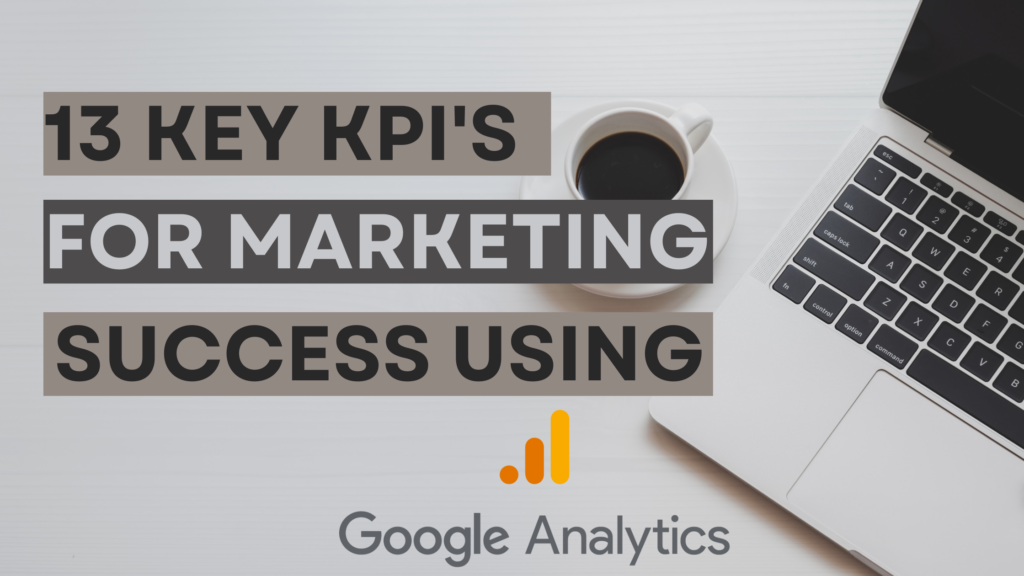
When it comes to the world of digital marketing, one tool reigns supreme in offering valuable insights: Google Analytics. From conversion rates to website traffic, understanding these metrics is crucial for making data-driven decisions that propel your business forward. Today, we’ll explore 13 key performance indicators (KPIs) that every marketing decision-maker should be tracking.
1. Conversion Rate
A reflection of how many website visitors take the desired action, such as making a purchase or filling out a form, the conversion rate is one of the most important KPIs. Improving this percentage can drastically enhance your overall revenue.
2. Website Traffic
Website traffic allows you to gauge the overall effectiveness of your marketing efforts. Monitoring this metric enables you to measure your brand’s visibility, understand audience engagement, and evaluate growth trends.
3. Average Order Value (AOV)
AOV measures the average total of every order placed over a defined period. This KPI helps determine the effectiveness of your pricing strategy and marketing efforts, guiding decisions like product bundling or upselling techniques.
4. Sales
A straightforward KPI, sales indicate the total revenue your business generates. Monitor sales patterns over time, analyzing both peaks and dips, to assess your marketing campaign’s effectiveness.
5. Sales Goal for This Year
Yearly sales goals are important benchmarks. These targets give your team something to strive for and help measure performance over time.
6. Return on Ad Spend (ROAS)
ROAS evaluates the efficiency of your advertising campaigns by comparing the revenue generated from ads to the cost of those ads. This metric provides insight into which ads drive conversions and which need to be improved or replaced.
7. ROI on Marketing
The overall return on investment (ROI) from your marketing efforts tells you how profitable your campaigns are. Understanding this metric is crucial for allocating marketing budget and strategizing future campaigns.
8. Length of Customer Purchase Cycle (not in google analytics)
Understanding the duration of your customer purchase cycle helps to fine-tune marketing efforts. If your cycle is long, nurturing leads may require more emphasis. If it’s short, you might focus more on generating new leads.
9. Repurchase Rate (not in google analytics)
The repurchase rate reflects customer loyalty by revealing how often customers come back to make additional purchases. Improving this metric often means enhancing the customer experience.
10. First Click (may not be in google analytics)
First-click attribution reveals the marketing channel that first brought a customer to your website. This KPI helps identify which channels are most effective in attracting traffic and informs where to concentrate efforts. Google Analytics tries to show the first click and last click, but its limitation is it only tracks 30 days and sometimes can miss across devices. The best way to gather this data is from a post-purchase survey.
11. Top Channels for Driving Traffic
Determining your most productive traffic channels can streamline your marketing strategy, ensuring your budget and resources are allocated most effectively.
12. Last Click
The last click metric shows you the last marketing channel a customer interacted with before making a purchase or converting. This KPI can inform your understanding of which channels are best for closing the deal. Be aware with Apple iOS changes it is getting hard in recent years to track and will become harder. Read this article for more information.
13. Customer Lifetime Value (CLV) (not in google analytics)
CLV predicts the net profit attributed to the entire future relationship with a customer. This crucial KPI helps decide how much to invest in acquiring new customers and retaining existing ones.
When evaluating these KPIs, it’s essential to compare the data year over year (YOY) or from a similar period to a similar period. This comparative analysis offers a clearer perspective on your marketing performance, factoring in seasonal trends and long-term growth patterns.
Navigating the sea of metrics in Google Analytics can be challenging, but understanding these KPIs is an invaluable step in the journey toward data-driven decision-making and marketing success. With these insights in your toolkit, you’re well-equipped to craft marketing strategies that deliver tangible, profitable results.
If you need help in understanding and using these please reach out for a free session with one of our team members.
